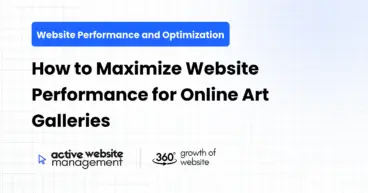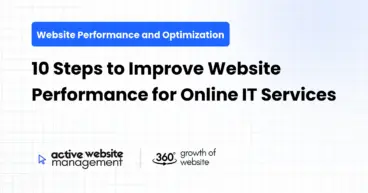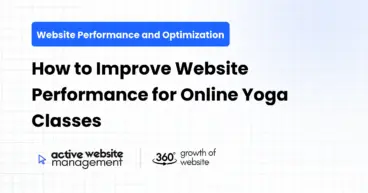January 3, 2025
7 min read
In today’s digital landscape, mobile commerce (m-commerce) is not just a trend; it’s a necessity. With mobile traffic accounting for more than half of all web traffic globally, businesses need to optimize their online stores for mobile devices to stay competitive. Magento, one of the most popular open-source eCommerce platforms, offers a powerful solution for building and managing online stores. However, to truly thrive in the mobile-first world, Magento stores need to be optimized for mobile users.
In this comprehensive guide, we’ll explore actionable strategies to optimize your Magento store for mobile commerce success. From mobile-friendly design principles to performance enhancements, SEO tactics, and security measures, we’ll cover it all.
1. Introduction to Mobile Commerce and Magento
Mobile commerce refers to the buying and selling of products or services via mobile devices like smartphones and tablets. With over 50% of all global web traffic coming from mobile devices, m-commerce is shaping the future of online shopping. Magento, a highly customizable and scalable eCommerce platform, is an excellent choice for building mobile-friendly stores.
However, simply having a Magento store is not enough. To ensure your store is optimized for mobile commerce success, it requires a strategy tailored for mobile users. Mobile optimization not only improves user experience but also enhances SEO rankings, speeds up the purchasing process, and increases conversion rates.
2. Why Mobile Optimization is Crucial for Magento Stores
Mobile optimization is crucial for several reasons:
- User Experience (UX): Mobile users expect fast, easy-to-navigate websites. If your Magento store is not optimized, visitors are likely to abandon their carts or leave your site altogether.
- Search Engine Rankings: Google uses mobile-first indexing, meaning the mobile version of your website is considered the primary version for ranking purposes.
- Conversion Rates: A mobile-optimized store provides a seamless checkout experience, increasing the chances of converting visitors into paying customers.
3. Essential Elements for Mobile Optimization in Magento
Don’t Just Maintain Your Website—
Grow It using Active Website Management! Don't Wait for Growth—Accelerate It with Active Website Management
3.1 Responsive Design
Responsive design is the foundation of mobile optimization. It ensures that your website automatically adjusts to fit different screen sizes, from smartphones to tablets to desktop computers.
In Magento, you can implement responsive design by:
- Choosing a responsive Magento theme.
- Customizing the theme to adapt to various mobile screen sizes.
- Testing the design on different devices to ensure compatibility.
3.2 Mobile-Friendly Navigation
Navigation is a critical component of the mobile shopping experience. On small screens, users should be able to easily browse products, view their cart, and access important information like customer support.
Best practices for mobile navigation in Magento include:
- Simplified Menu: Use a hamburger menu or a compact navigation bar for easy access to categories.
- Sticky Navigation: A sticky header ensures that the main menu stays visible as users scroll down the page.
- Search Bar: A prominent search bar helps users quickly find what they are looking for.
3.3 Optimized Product Pages
Product pages are where the purchase decision happens. For mobile users, these pages should load quickly and present all necessary information in an easy-to-read format.
Here are some key tips for optimizing product pages for mobile:
- High-Quality Images: Use high-resolution images that load quickly and are optimized for mobile screens.
- Mobile-Friendly Product Descriptions: Keep product descriptions concise but informative. Avoid lengthy text that’s difficult to read on smaller screens.
- Clear Call-to-Actions (CTAs): Make buttons like “Add to Cart” and “Buy Now” easily clickable and visually prominent.
3.4 Faster Load Times
Slow-loading websites result in higher bounce rates and lower conversions. Mobile users expect fast websites, and if your Magento store takes too long to load, you risk losing potential customers.
To improve load times:
- Leverage Browser Caching: Ensure that users don’t have to reload content every time they visit a page.
- Optimize Server Performance: Choose a reliable hosting provider that supports fast loading speeds.
- Compress and Minify Files: Use tools to compress CSS, JavaScript, and HTML files.
4. SEO Best Practices for Mobile Magento Stores
SEO is crucial for driving organic traffic to your mobile Magento store. To ensure your store ranks well on search engines, follow these best practices:
4.1 Mobile-Friendly URLs
Your URLs should be clean, concise, and easy to read on both desktop and mobile devices. Avoid using long, complex URLs with unnecessary parameters.
Magento allows you to customize URL structures. Use short, descriptive URLs with relevant keywords for each product or category page.
4.2 Optimized Content and Metadata
Content and metadata should be optimized for mobile search. This includes:
- Mobile-Friendly Titles: Ensure your title tags are short and compelling, as they may get cut off on smaller screens.
- Optimized Meta Descriptions: Meta descriptions should be clear and engaging, encouraging mobile users to click on your listings.
4.3 Structured Data for Mobile
Structured data helps search engines understand the content on your site, leading to richer search results. For Magento, implement structured data for products, reviews, and breadcrumbs.
5. Improving Mobile Site Speed on Magento
Site speed is one of the most important factors for mobile optimization. Here’s how you can make your Magento store faster:
Don't Wait for Growth—Accelerate It with
Active Website Management Don't Wait for Growth—Accelerate It with Active Website Management
5.1 Use a Content Delivery Network (CDN)
A CDN caches your website’s content across various locations globally, delivering it from the server closest to the user. This reduces load times and improves user experience.
5.2 Image Optimization
Images can significantly impact page load speed. Use formats like WebP and ensure that all images are compressed without sacrificing quality.
5.3 Minimize JavaScript and CSS
Minify your JavaScript and CSS files to reduce their size. Use asynchronous loading to ensure that scripts do not block the rendering of content on mobile devices.
5.4 Lazy Loading for Mobile
Lazy loading allows images and other elements to load only when they are about to be viewed. This helps improve page speed, especially on mobile devices where data usage may be a concern.
6. Mobile Security Best Practices for Magento
Security is always a priority, but it’s especially important for mobile commerce, where transactions often involve sensitive data. To secure your Magento store for mobile users, follow these best practices:
6.1 Enable SSL Encryption
SSL (Secure Sockets Layer) encryption ensures that data transferred between your Magento store and users is secure. Always use HTTPS to protect sensitive information, particularly during transactions.
6.2 Regular Software Updates
Ensure that Magento and all its extensions are regularly updated. Security patches are frequently released to address vulnerabilities.
6.3 Mobile-Specific Security Measures
Mobile security requires additional considerations, such as ensuring secure payment gateways and protecting mobile apps from malware.
7. The Role of Active Website Management in Mobile Commerce
To ensure ongoing success with mobile commerce, an Active Website Management (AWM) approach is essential. AWM involves regular updates and optimizations to your Magento store, ensuring it remains mobile-friendly and secure.
By investing in Active Website Management, you can:
- Keep your Magento store up to date with the latest mobile optimization techniques.
- Continuously improve website performance and security.
- Regularly update content, design, and features to stay competitive in the mobile commerce space.
For more information on how Active Website Management can benefit your Magento store, check out our detailed guide on website security firewalls and explore our plans & pricing to find the right solution for your business.
8. Conclusion
Optimizing your Magento store for mobile commerce success requires a combination of responsive design, performance enhancements, SEO strategies, and security best practices. By focusing on mobile optimization, you can ensure a seamless experience for your customers, increase conversions, and stay ahead of the competition.
Remember, continuous monitoring and updates are key to maintaining a mobile-friendly store. By adopting a proactive approach, such as Active Website Management, you can keep your Magento store optimized for mobile commerce growth in the long run.






